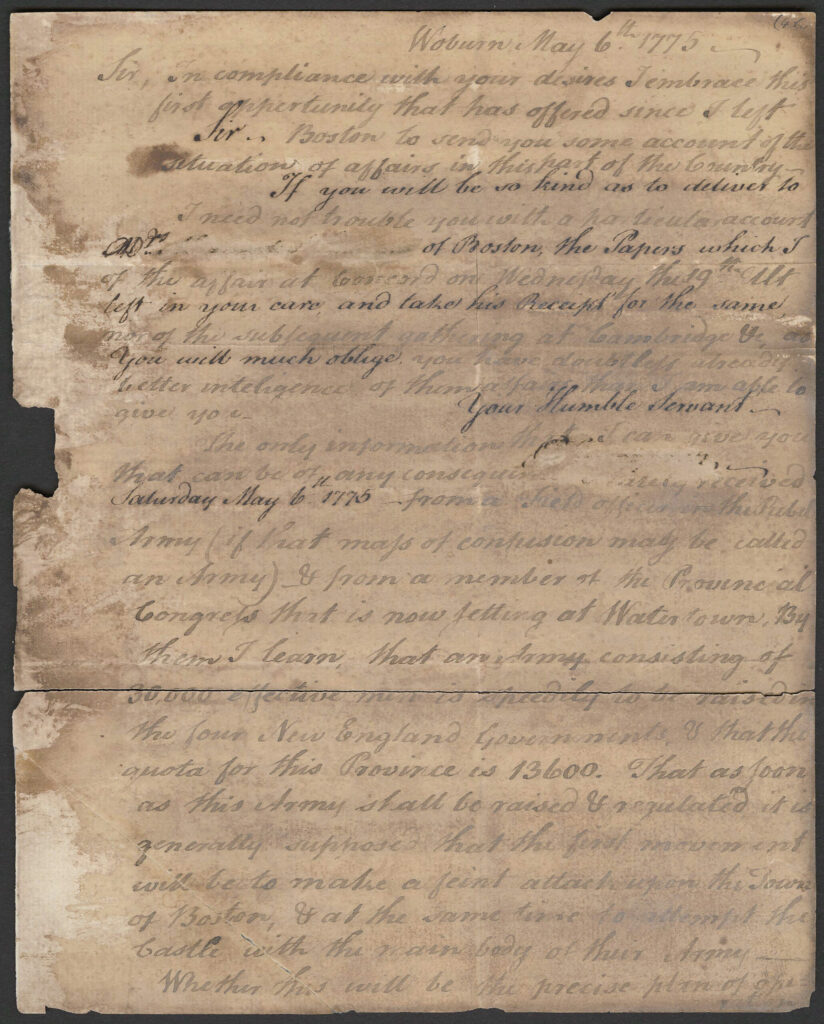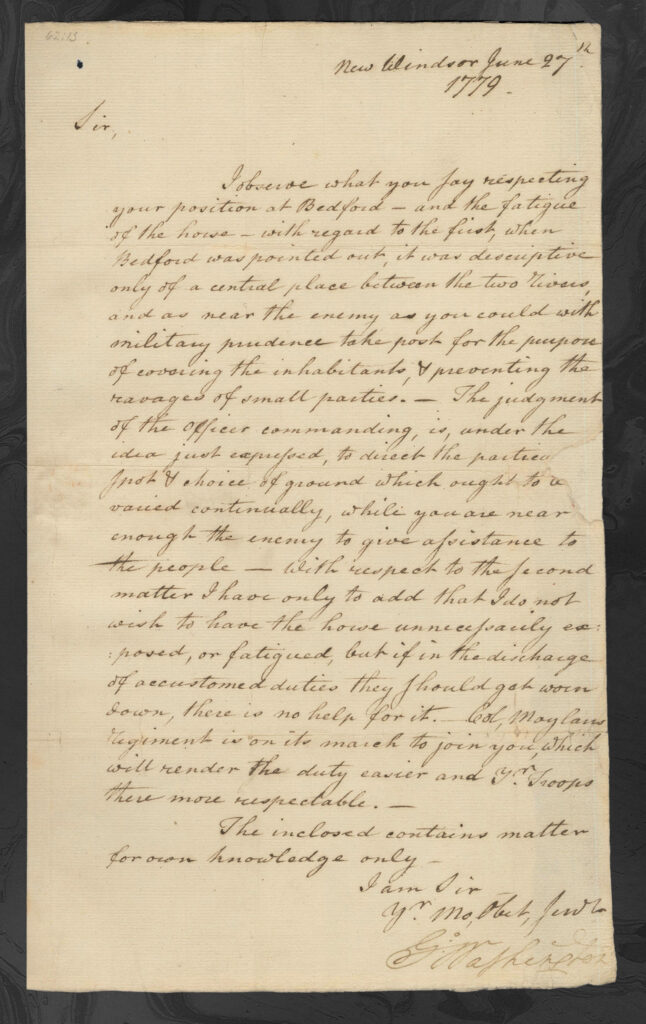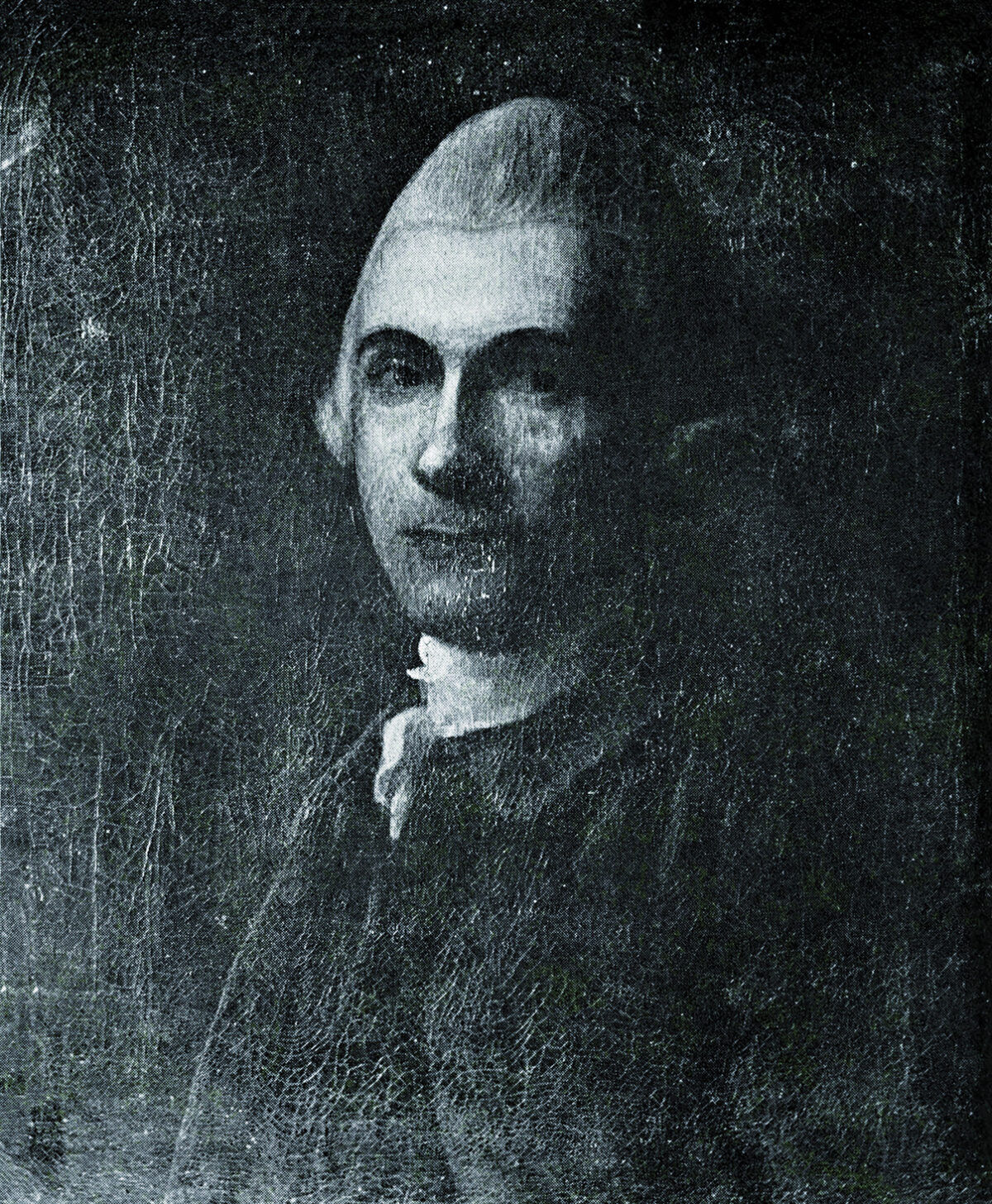Fishkill, New York was arguably the fulcrum of espionage efforts by Patriots in the American Revolution. Fishkill is where Founding Father John Jay coordinated counterintelligence efforts around undercover agent Enoch Crosby. Crosby’s successful efforts to infiltrate Loyalist militia networks during the war inspired the first best-selling novel in U.S. history, The Spy, by James Fenimore Cooper, published in 1821. Cooper had gleaned the exploits of Crosby from his handler, Jay, over many dinners and created a composite spy character named Harvey Birch. Crosby eventually published his own memoirs several years later, The Spy Unmasked, though unfortunately the sales of his original accounts paled in comparison to Cooper’s smash novel.
What is largely unknown even today is the existence of the site of an invisible ink laboratory located in what is now East Fishkill. Operated by John Jay’s brother, Sir James Jay, it produced the unique, magical ink that Gen. George Washington heavily relied on for use by many of his spies. This included not only both the Culper Spy Ring of Major Benjamin Tallmadge and the Dayton Spy Ring of Col. Elias Dayton of Elizabeth, New Jersey, but also some very sensitive correspondence of diplomat Silas Deane of Wethersfield, Connecticut and Elias Boudinot of Elizabeth, New Jersey.
Washington’s Secret Lab
The first of 32 letters involving Gen. Washington, the spymaster, and James Jay (including 10 between Washington and Jay) is an introductory letter about the invisible ink between these two Founding Fathers—to Washington from John Jay:
Fish Kill 19th Novr 1778
Sir
This will be delivered by my Brother, [James] who will communicate & explain to your Excellency a mode of Correspondence, which may be of use, provided proper agents can be obtained. I have experienced its Efficacy by a three Years Trial. We shall remain absolutely silent on the Subject. I have the Honor to be with the highest Esteem & Respect Your Excellency’s most obedient Servant
John Jay
James Jay (1732-1815) was a physician and amateur chemist, who studied and practiced medicine in Great Britain from the 1750s until the outbreak of the Revolutionary War. James was knighted by King George III in 1763 for his efforts in raising money for King’s (Columbia) College of New York as well as Ben Franklin’s projected college, now the University of Pennsylvania. James was described as “haughty, proud, overbearing, supercilious, pedantic, vain, and ambitious” as well as being a notorious over-charger; eventually his medical practice “became entirely confined among his own relations.” His writings included a pamphlet written in 1772, Reflections and Observations on the Gout. James developed his invisible ink in 1775 and used it throughout the war in correspondence with his brother, John. He never disclosed the chemistry of the ink.
The Problem With INk
Invisible ink letters were already being composed using any liquid that dried to a clear color. The liquid also needed to be slightly acidic such as milk, lemon, lime or grapefruit juice as well as vinegar. When it was heated by fire, it would redevelop and allow for reading of the intended content. This reaction was able to happen because the heat weakened the fibers in the paper, thereby turning the ink brown and visible.

James’s invisible ink, however, was unique. The skilled chemist was able to create an ink that would not react to heat. This would prove to be the bane of British leadership in New York which was headed by Gen. Sir Henry Clinton and his intelligence officers, Maj. Henry Beckwith and Major John André.
By April of 1779, the Culper Ring had possession of Jay’s invisible ink and developer, as evidenced by the fact that Abraham Woodhull, aka Culper, wrote on April 12th to Tallmadge that he had received a vial of the invisible stain.
Washington soon after informed Boudinot he could share James Jay’s secret concoction in a May 3, 1779 letter: “It is in my power, I believe, to procure a liquid which nothing but a counter liquor (rubbed over the paper afterwards) can make legible—Fire which will bring lime juice, milk & other things of this kind to light, has no effect on it.”
The recipe for this special ink centered around gallotannic acid. This is found in the galls of many species of oak trees. As Washington indicated to Boudinot, anyone wish-ing to develop any letter written in Jay’s invisible ink had to have the counterpart liquid, or developer, also known as the reagent.
Summer 1779 proved to be an important turning point in secret correspondence in the American Revolution. Unbeknownst to Washington, his favorite battlefield commander, Maj. Gen. Benedict Arnold, had just begun correspondence with Maj. Andre in May, the month after his wedding to the fetching Peggy Shippen, daughter of a prominent Tory family. Also, that summer the British intercepted a letter of June 21st from Caleb Brewster to Tallmadge, revealing that Anna “Nancy” Strong, wife of Justice Selah Strong, was part of the Culper Ring.
Improving Secrecy
Another hapless event happened on July 3. Tallmadge was embarrassed to report by letter to Washington that he had lost his horse, some guineas and some important papers in a British surprise attack on his camp during the early morning of July 2. Washington replied to his case officer of the Culper Ring: “I have just received your letter of the 3d—the loss of your papers was certainly a most unlucky accident—and shows how dangerous it is to keep papers of any consequence at an advanced post—I beg you will take care to guard against the like in future—If you will send me a trusty person I will replace the guineas.”
As if all this was not enough, on July 5, a letter from Woodhull in Setauket, Long Island advised his childhood friend Tallmadge that he was under suspicion and therefore could no longer go into the British army camp in New York City. He further informed of his plan to move from the city back to Setauket, adding, “I shall endeavor to establish a confidential friend [Robert Townsend] to step into my place if agreeable direct in your next and forward the ink.”
Over the next several weeks, both Washington and Tallmadge scrambled to improve the tradecraft and the secrecy of the Culper Ring. Two letters on the same day, July 25, attest to these mutual efforts. Washington wrote to Tallmadge from West Point: “All the white Ink I now have (indeed all that there is any prospect of getting soon) is sent in Phial No. I. by Colo. [Samuel] Webb. the liquid in No. 2 is the Counterpart which renders the other visible by wetting the paper with a fine brush after the first has been used & is dry—You will send these to C——r Junr as soon as possible & I beg that no mention may ever be made of your having received such liquids from me or any one else—In all cases & at all times this prudence & circumspection is necessary but it is indispensably so now as I am informed that Govr Tryon has a preparation of the same kind, or something similar to it which may lead to a detection if it is ever known that a matter of this sort has passed from me.”
Making the Laboratory
That same day, a letter from Tallmadge to Washington demonstrates Tallmadge’s rushed efforts to create his famous code book, which is actually only four pages. The letter was written from Ridgefield, Conn., and enclosed the codes of numbers and words to correspond with the Culper spy ring. The intent was to have a reference guide for key players in the Culper espionage efforts that would not identify the participants to anyone who might intercept a letter. This way, despite interception and decoding, the opposition would still not know key individuals referred to by code names.

By spring 1780, the volume of letters between Washington and James Jay increased, as Washington had suddenly run out of the invisible ink in April. Washington wrote to Jay, who was with his brother John in Fishkill, in a bit of panic on April 9: “The liquid with which you were so obliging as to furnish me for the purpose of private correspondence is exhausted; and as I have found it very useful, I take the liberty to request you will favour me with a further supply. I have still a sufficiency of the materials for the counterpart on hand. Should you not have by you the necessary ingredients, if they are to be procured at any of the Hospitals within your reach, I would wish you to apply for them in my name. I hope you will excuse the trouble I give you on this occasion….P.S. If you should not be able to prepare the liquid in time for the bearer to bring, & will be so good as to commit it to the care of Colo. Hay he will forward it to me.”
James Jay replied to Washington on April 13, “I have the honor of yours of the 9th instant and I do myself the pleasure to send you the medicine you desire, in a little box, which I hope you will receive with this letter. I wish I could furnish you with a greater quantity, because I am afraid you may be too sparing of the little you will receive…This little however is all that remains of what I brought with me from Europe—I have now the principal ingredients for the composition by me, & the rest may be procured: but the misfortune is, that I have no place where a little apparatus may be erected for preparing it…”
The letter goes on about his need for an appropriate laboratory to reproduce the ingredients. Jay concluded: “I shall soon have the satisfaction of sending you such a supply that you may not only use it freely yourself, but even spare a little to a friend, if necessary, without the apprehension of future want.”
Washington’s Favorite Ink
Washington was delighted to receive more of Jay’s ink by special courier. It would be interesting to know who was entrusted with such a special, sensitive duty. A likely candidate would have been one of Tallmadge’s colleagues in Col. Elisha Sheldon’s Second Continental Light Dragoons, an elite cavalry unit in which Tallmadge was an officer.
In a letter to Jay, Washington expressed his improved state of affairs—and also his support for having an invisible ink laboratory constructed for Jay. Instead of being obvious about the content in question, Washington cloaked his wording to Jay: “I have had the pleasure of receiving your favours of the 13th & 20th of April. The Box of Medicine mentioned in the former came safe to hand, and was the more acceptable, as I had entirely expended the first parcel with which you had been kind enough to furnish me. I have directed Colo. Hay to assist you in erecting a small Elaboratory from which I hope you will derive improvement and amusement, and the public some advantages.”
Washington then wrote to Lt. Col. Udny Hay, deputy quartermaster general, who was located at Fishkill because of the town’s supply depot for the Continental Army and patriot militia. He informed Hay that Jay asked for a day or two to build a small “Elaboratory, as he purposes making some experiments which may be of public utility and has already furnished me with some Chymical preparations from which I have derived considerable advantages I think it proper to gratify him.”
Untraceable
Following a year and a half of “on again, off again” secret correspondence, Maj. Gen. Benedict Arnold and Maj. John André met on the shoreline in the woods south of West Point on Sept. 22, 1780. On that same fateful day in 1776, Capt. Nathan Hale had been hanged as a spy by the British in Manhattan. Several days earlier, on Sept. 19, James Jay wrote the last of any existing letters between himself and Washington before war’s end. He apologized for not supplying the “medicine” sooner due to financial constraints. It was evident from the letter and its warm closing that Jay held Washington in high esteem. Years later, in 1784 Jay wrote to Washington, asking him to validate his secret service, which he did. This letter was penned from London, where he lived out the rest of his life.
The invisible ink and Tallmadge’s code book proved largely effective. None of the agents or couriers, nor Tallmadge the case officer, were positively identified or captured by the British. Details of the efforts of James Jay and the Culper Ring did not come to light until the 1930s research of Long Island historian Morton Pennypacker. The team effort of Washington as spymaster, coupled with the many brave agents and couriers (as well as Tallmadge), blended with a talented chemist in James Jay to become a formidable force against the mighty British military. They used ingenuity and creativity in their quest for freedom and independence from the British global empire.
The location of Jay’s secret laboratory is adjacent to the temporary home of John Jay which was the 1740 Judge Theodorus Van Wyck House, located in the Wiccopee hamlet of what is now East Fishkill. This was for many years on the property of today’s large IBM campus. The lab was lost to history sometime after the war, while the Van Wyck House was unfortunately demolished by IBM in the 1970s.






